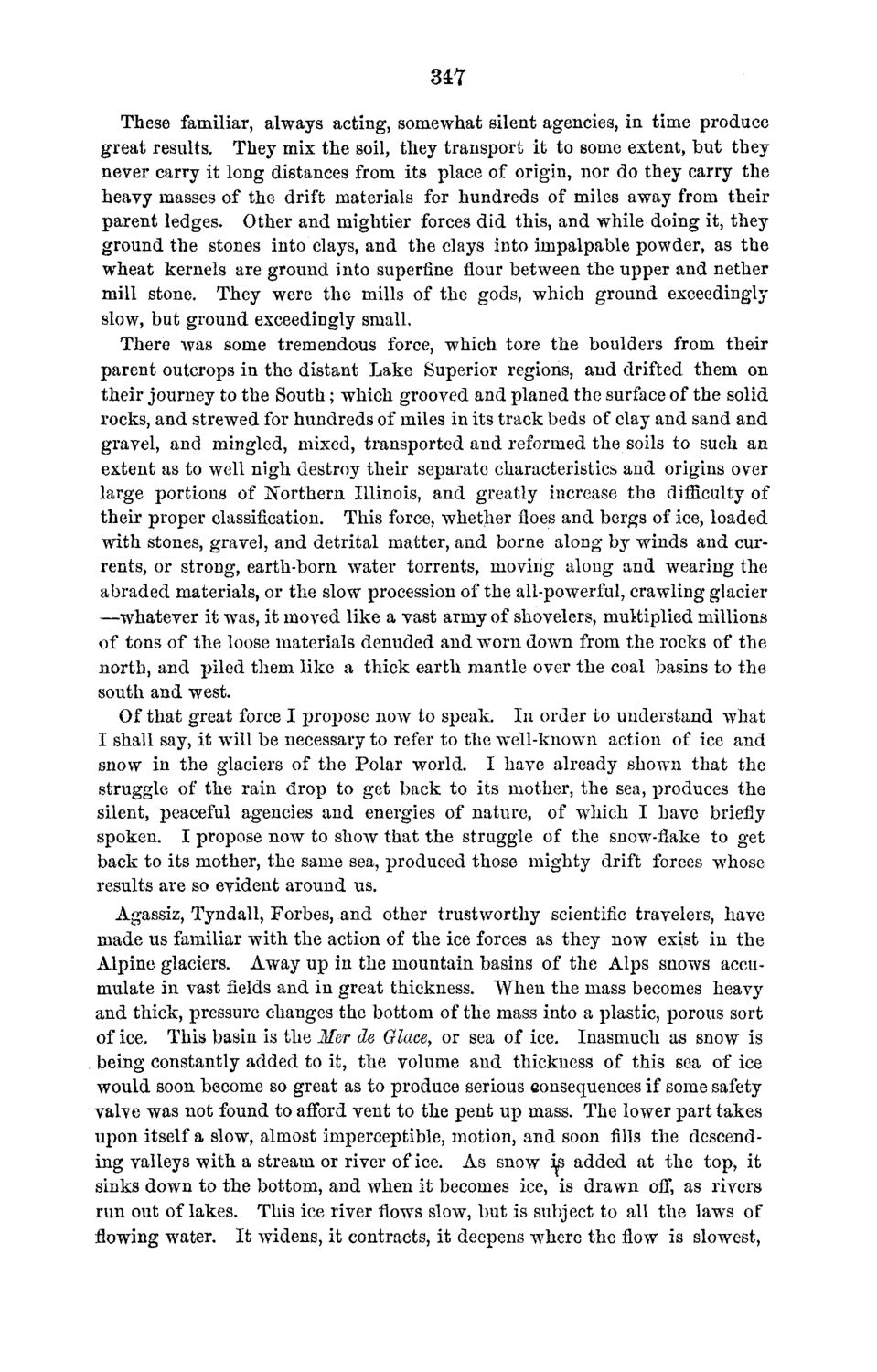| |
| |
Caption: Board of Trustees Minutes - 1870
This is a reduced-resolution page image for fast online browsing.

EXTRACTED TEXT FROM PAGE:
347 These familiar, always acting, somewhat silent agencies, in time produce great results. They mix the soil, they transport it to some extent, but they never carry it long distances from its place of origin, nor do they carry the heavy masses of the drift materials for hundreds of miles away from their parent ledges. Other and mightier forces did this, and while doing it, they ground the stones into clays, and the clays into impalpable powder, as the wTheat kernels are ground into superfine flour between the upper and nether mill stone. They were the mills of the gods, which ground exceedingly slow, but ground exceedingly small. There was some tremendous force, which tore the boulders from their parent outcrops in the distant Lake Superior regions, and drifted them on their journey to the South; which grooved and planed the surface of the solid rocks, and strewed for hundreds of miles in its track beds of clay and sand and gravel, and mingled, mixed, transported and reformed the soils to such an extent as to well nigh destroy their separate characteristics and origins over large portions of Northern Illinois, and greatly increase the difliculty of their proper classification. This force, whether floes and bergs of ice, loaded with stones, gravel, and detrital matter, and borne along by winds and currents, or strong, earth-born water torrents, moving along and wearing the abraded materials, or the slow procession of the all-powerful, crawling glacier —whatever it was, it moved like a vast army of shovelers, multiplied millions of tons of the loose materials denuded and wrorn down from the rocks of the north, and piled them like a thick earth mantle over the coal basins to the south and west. Of that great force I propose now to speak. In order to understand what I shall say, it will be necessary to refer to the well-known action of ice and snow in the glaciers of the Polar world. I have already shown that the struggle of the rain drop to get back to its mother, the sea, produces the silent, peaceful agencies and energies of nature, of which I have briefly spoken. I propose now to show that the struggle of the snow-flake to get back to its mother, the same sea, produced those mighty drift forces whose results are so evident around us. Agassiz, Tyndall, Forbes, and other trustworthy scientific travelers, have made us familiar with the action of the ice forces as they now exist in the Alpine glaciers. Away up in the mountain basins of the Alps snows accumulate in vast fields and in great thickness. When the mass becomes heavy and thick, pressure changes the bottom of the mass into a plastic, porous sort of ice. This basin is the Mer de Glace, or sea of ice. Inasmuch as snow is being constantly added to it, the volume and thickness of this sea of ice would soon become so great as to produce serious consequences if some safety valve was not found to afford vent to the pent up mass. The lower part takes upon itself a slow, almost imperceptible, motion, and soon fills the descending valleys with a stream or river of ice. As snow is added at the top, it sinks down to the bottom, and when it becomes ice, is drawn off, as rivers run out of lakes. This ice river flows slow, but is subject to all the laws of flowing water. It widens, it contracts, it deepens where the flow is slowest,
| |